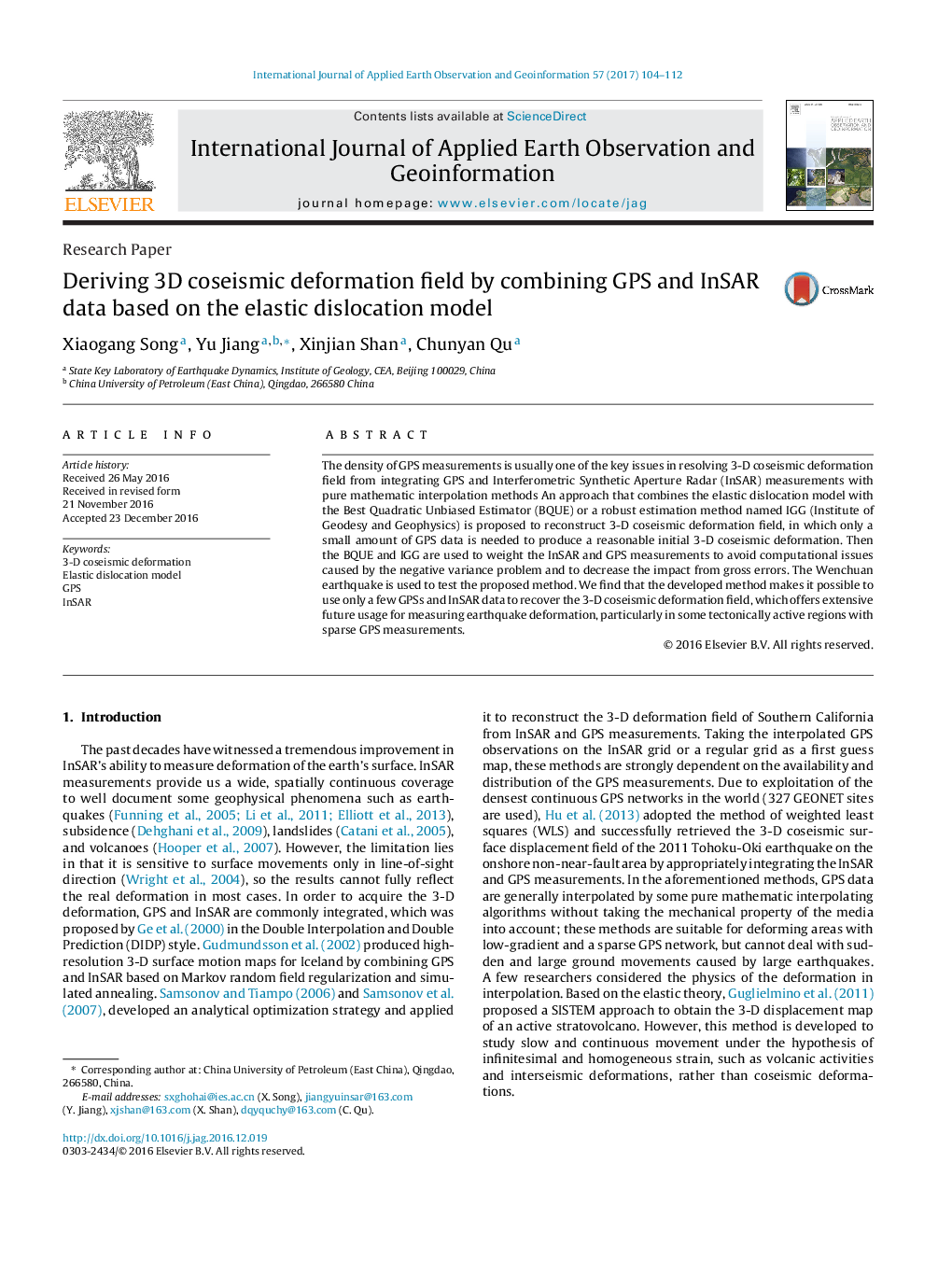| کد مقاله | کد نشریه | سال انتشار | مقاله انگلیسی | نسخه تمام متن |
|---|---|---|---|---|
| 5755555 | 1621800 | 2017 | 9 صفحه PDF | دانلود رایگان |
عنوان انگلیسی مقاله ISI
Deriving 3D coseismic deformation field by combining GPS and InSAR data based on the elastic dislocation model
دانلود مقاله + سفارش ترجمه
دانلود مقاله ISI انگلیسی
رایگان برای ایرانیان
کلمات کلیدی
موضوعات مرتبط
مهندسی و علوم پایه
علوم زمین و سیارات
کامپیوتر در علوم زمین
پیش نمایش صفحه اول مقاله

چکیده انگلیسی
The density of GPS measurements is usually one of the key issues in resolving 3-D coseismic deformation field from integrating GPS and Interferometric Synthetic Aperture Radar (InSAR) measurements with pure mathematic interpolation methods An approach that combines the elastic dislocation model with the Best Quadratic Unbiased Estimator (BQUE) or a robust estimation method named IGG (Institute of Geodesy and Geophysics) is proposed to reconstruct 3-D coseismic deformation field, in which only a small amount of GPS data is needed to produce a reasonable initial 3-D coseismic deformation. Then the BQUE and IGG are used to weight the InSAR and GPS measurements to avoid computational issues caused by the negative variance problem and to decrease the impact from gross errors. The Wenchuan earthquake is used to test the proposed method. We find that the developed method makes it possible to use only a few GPSs and InSAR data to recover the 3-D coseismic deformation field, which offers extensive future usage for measuring earthquake deformation, particularly in some tectonically active regions with sparse GPS measurements.
ناشر
Database: Elsevier - ScienceDirect (ساینس دایرکت)
Journal: International Journal of Applied Earth Observation and Geoinformation - Volume 57, May 2017, Pages 104-112
Journal: International Journal of Applied Earth Observation and Geoinformation - Volume 57, May 2017, Pages 104-112
نویسندگان
Xiaogang Song, Yu Jiang, Xinjian Shan, Chunyan Qu,